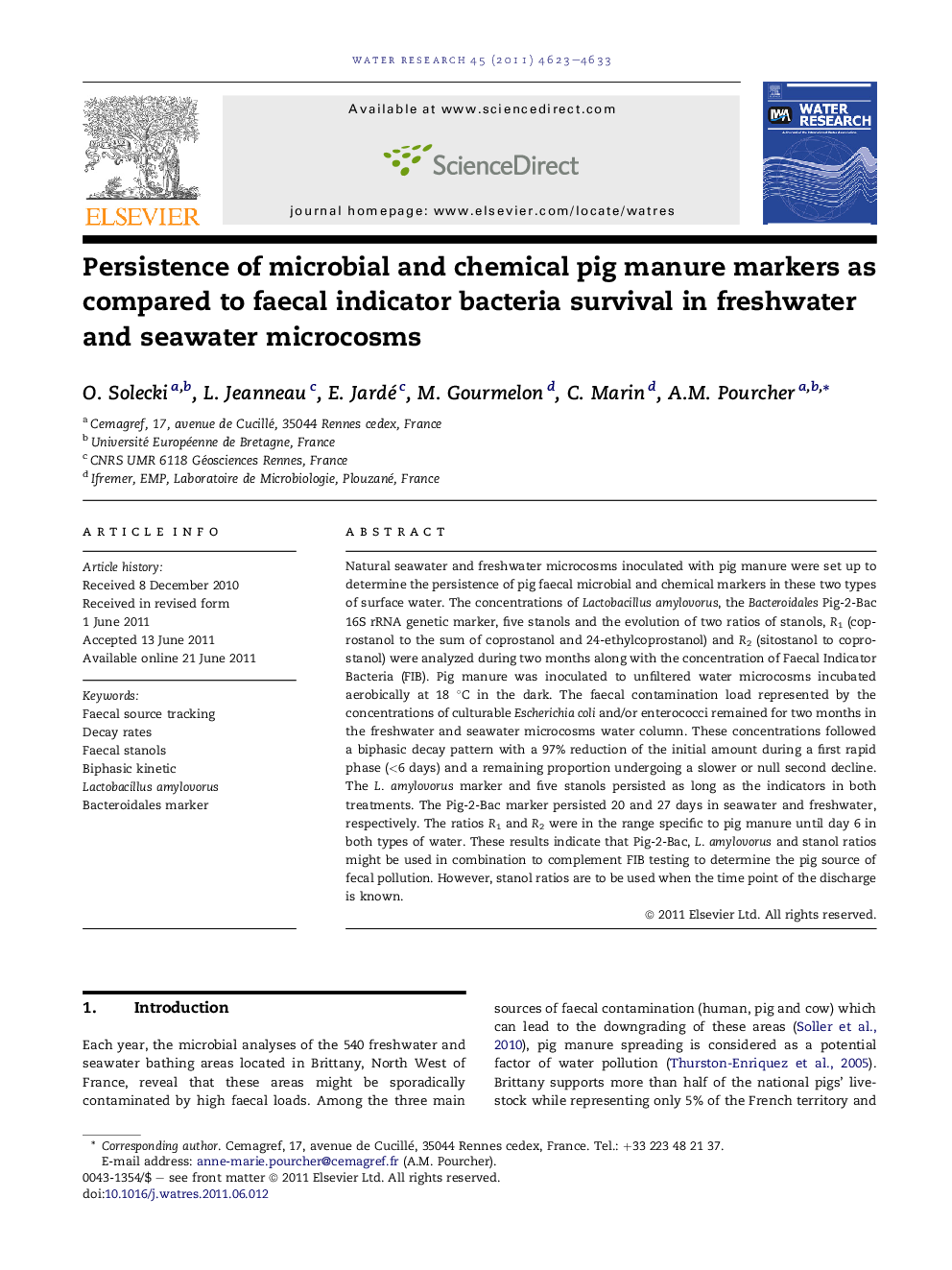| کد مقاله | کد نشریه | سال انتشار | مقاله انگلیسی | نسخه تمام متن |
|---|---|---|---|---|
| 4483320 | 1316884 | 2011 | 11 صفحه PDF | دانلود رایگان |

Natural seawater and freshwater microcosms inoculated with pig manure were set up to determine the persistence of pig faecal microbial and chemical markers in these two types of surface water. The concentrations of Lactobacillus amylovorus, the Bacteroidales Pig-2-Bac 16S rRNA genetic marker, five stanols and the evolution of two ratios of stanols, R1 (coprostanol to the sum of coprostanol and 24-ethylcoprostanol) and R2 (sitostanol to coprostanol) were analyzed during two months along with the concentration of Faecal Indicator Bacteria (FIB). Pig manure was inoculated to unfiltered water microcosms incubated aerobically at 18 °C in the dark. The faecal contamination load represented by the concentrations of culturable Escherichia coli and/or enterococci remained for two months in the freshwater and seawater microcosms water column. These concentrations followed a biphasic decay pattern with a 97% reduction of the initial amount during a first rapid phase (<6 days) and a remaining proportion undergoing a slower or null second decline. The L. amylovorus marker and five stanols persisted as long as the indicators in both treatments. The Pig-2-Bac marker persisted 20 and 27 days in seawater and freshwater, respectively. The ratios R1 and R2 were in the range specific to pig manure until day 6 in both types of water. These results indicate that Pig-2-Bac, L. amylovorus and stanol ratios might be used in combination to complement FIB testing to determine the pig source of fecal pollution. However, stanol ratios are to be used when the time point of the discharge is known.
► Escherichia coli and enterococci from pig manure followed a biphasic decay in water microcosms.
► The marker Lactobacillus amylovorus followed the same trend as enterococci in fresh and seawater.
► The marker Pig-2-Bac followed the same trend as E. coli in seawater.
► Pig-specific stanols and L. amylovorus persisted for two months.
► Stanols and L. amylovorus detection and persistence was not affected by salinity.
Journal: Water Research - Volume 45, Issue 15, 1 October 2011, Pages 4623–4633